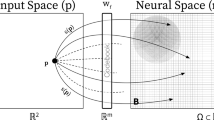Abstract
For analyzing properties of complex systems, a mathematical model for these systems is useful. In micro-level modeling a multigraph can be used to describe the connections between objects. The behavior of the objects in the system can be described by (stochastic) automatons. In such a model, quantitative measures can be defined for the analysis of the systems or for the design of new systems. Due to the high complexity, it is usually impossible to calculate the exact values of the measures, so approximation methods are needed. In this paper we investigate some approximation methods to be able to calculate quantitative measures in a micro-level model of a complex system. To analyze the practical usability of the concepts, the methods are applied to a slot synchronization algorithm in wireless sensor networks.
Access this chapter
Tax calculation will be finalised at checkout
Purchases are for personal use only
Preview
Unable to display preview. Download preview PDF.
Similar content being viewed by others
References
Holzer, R., de Meer, H., Bettstetter, C.: On autonomy and emergence in self-organizing systems. In: Hummel, K.A., Sterbenz, J.P.G. (eds.) IWSOS 2008. LNCS, vol. 5343, pp. 157–169. Springer, Heidelberg (2008)
Holzer, R., de Meer, H.: Quantitative Modeling of Self-organizing Properties. In: Spyropoulos, T., Hummel, K.A. (eds.) IWSOS 2009. LNCS, vol. 5918, pp. 149–161. Springer, Heidelberg (2009)
Auer, C., Wüchner, P., de Meer, H.: The degree of global-state awareness in self-organizing systems. In: Spyropoulos, T., Hummel, K.A. (eds.) IWSOS 2009. LNCS, vol. 5918, pp. 125–136. Springer, Heidelberg (2009)
de Meer, H., Koppen, C.: Characterization of self-organization. In: Steinmetz, R., Wehrle, K. (eds.) Peer-to-Peer Systems and Applications. LNCS, vol. 3485, pp. 227–246. Springer, Heidelberg (2005)
Heylighen, F.P.: The science of self-organization and adaptivity. In: Kiel, L.D. (ed.) Knowledge Management, Organizational Intelligence and Learning, and Complexity. The Encyclopedia of Life Support Systems. EOLSS Publishers (2003)
Shalizi, C.R.: Causal Architecture, Complexity and Self-Organization in Time Series and Cellular Automata. PhD thesis, University of Wisconsin-Madison (2001)
Nicolis, G., Prigogine, I.: Self-Organization in Non-Equilibrium Systems: From Dissipative Structures to Order Through Fluctuations. Wiley, Chichester (1977)
von Foerster, H.: On Self-Organizing Systems and their Environments. In: Self-Organizing Systems, pp. 31–50. Pergamon, Oxford (1960)
Ashby, W.R.: Principles of the Self-organizing System. In: Principles of Self-Organization, pp. 255–278. Pergamon, Oxford (1962)
Heylighen, F., Joslyn, C.: Cybernetics and second order cybernetics. Encyclopedia of Physical Science & Technology 4, 155–170 (2001)
Haken, H.: Synergetics and the Problem of Selforganization. In: Self-organizing Systems: An Interdisciplinary Approach, pp. 9–13. Campus Verlag (1981)
Gershenson, C.: Design and Control of Self-organizing Systems. PhD thesis, Vrije Universiteit Brussel, Brussels, Belgium (May 2007)
Holzer, R., Wuechner, P., De Meer, H.: Modeling of self-organizing systems: An overview. Electronic Communications of the EASST 27, 1–12 (2010)
Di Marzo Serugendo, G., Foukia, N., Hassas, S., Karageorgos, A., Mostfaoui, S.K., Rana, O.F., Ulieru, M., Valckenaers, P., Van Aart, C.: Self-organisation: Paradigms and applications. In: Di Marzo Serugendo, G., Karageorgos, A., Rana, O.F., Zambonelli, F. (eds.) ESOA 2003. LNCS (LNAI), vol. 2977, pp. 1–19. Springer, Heidelberg (2004)
Holzer, R., de Meer, H.: On modeling of self-organizing systems. In: Autonomics 2008 (2008)
Mnif, M., Mueller-Schloer, C.: The quantitative emergence. In: Proc. of the 2006 IEEE Mountain Workshop on Adaptive and Learning Systems (SMCals 2006), pp. 78–84. IEEE, Los Alamitos (2006)
Fisch, D., Jnicke, M., Sick, B., Müller-Schloer, C.: Quantitative emergence a refined approach based on divergence measures. In: Fourth IEEE International Conference on Self-Adaptive and Self-Organizing Systems, Budapest (2010)
Cover, T.M., Thomas, J.A.: Elements of Information Theory, 2nd edn. Wiley, Chichester (2006)
Bishop, C.M.: Pattern Recognition and Machine Learning. Springer, New York (2006)
Bishop, C.M.: Novelty detection and neural network validation. In: IEEE Proc. Vision, Image Signal Processing, vol. 141, pp. 217–222 (1994)
Tyrrell, A., Auer, G., Bettstetter, C.: Biologically inspired synchronization for wireless networks. In: Dressler, F., Carreras, I. (eds.) Advances in Biologically Inspired Information Systems: Models, Methods, and Tools. SCI, vol. 69, pp. 47–62. Springer, Heidelberg (2007)
Mirollo, R., Strogatz, S.: Synchronization of pulse-coupled biological oscillators. SIAM Journal of Applied Mathematics 50, 1645–1662 (1990)
Author information
Authors and Affiliations
Editor information
Editors and Affiliations
Rights and permissions
Copyright information
© 2011 Springer-Verlag Berlin Heidelberg
About this paper
Cite this paper
Holzer, R., de Meer, H. (2011). Methods for Approximations of Quantitative Measures in Self-Organizing Systems. In: Bettstetter, C., Gershenson, C. (eds) Self-Organizing Systems. IWSOS 2011. Lecture Notes in Computer Science, vol 6557. Springer, Berlin, Heidelberg. https://doi.org/10.1007/978-3-642-19167-1_1
Download citation
DOI: https://doi.org/10.1007/978-3-642-19167-1_1
Publisher Name: Springer, Berlin, Heidelberg
Print ISBN: 978-3-642-19166-4
Online ISBN: 978-3-642-19167-1
eBook Packages: Computer ScienceComputer Science (R0)



